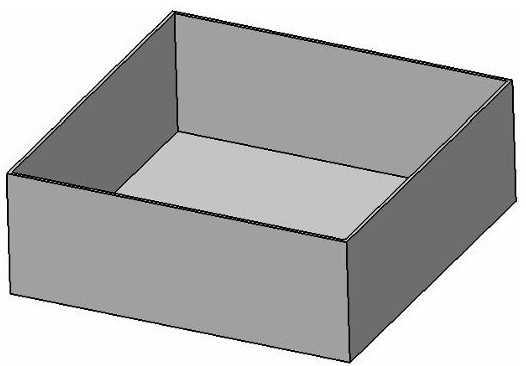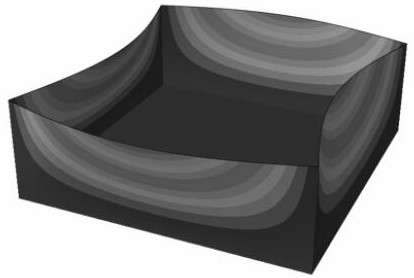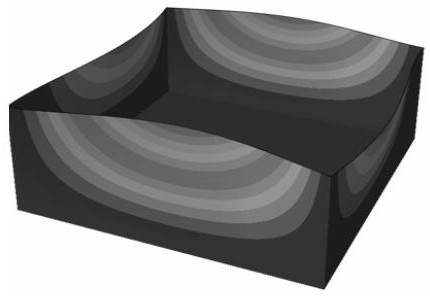Method for judging structural rigidity of part based on static load deformation
A rigid and static load technology, applied in the field of mechanical processing, can solve the problem of lack of fast and effective judgment methods for the machinability of weakly rigid structures
- Summary
- Abstract
- Description
- Claims
- Application Information
AI Technical Summary
Problems solved by technology
Method used
Image
Examples
Embodiment 1
[0035] A method for judging the structural rigidity of parts based on static load deformation, comprising the following steps:
[0036] A, set up the characteristic model of weakly rigid structure, described characteristic model is a square box body structure model, the top opening of described square box body;
[0037] b. Determine the area to be processed, the processing area is the edge structure of the four sides of the square box, and the edge structure includes the thickness A of the box, the height B of the box and the side length C of the box;
[0038] c. Find out the rigid weak points in the area to be processed by modal analysis method;
[0039] d. Design the orthogonal test of box body thickness A, box body height B and box body side length C through the number and parameters of geometric features;
[0040] e. Establish a finite element model;
[0041] f. In the orthogonal test, a static load is applied to the rigid weak point of the box thickness A, box height B ...
Embodiment 2
[0050] A method for judging the structural rigidity of parts based on static load deformation, comprising the following steps:
[0051] a. If Figures 1 to 5 As shown, a characteristic model of a weakly rigid structure is established. The characteristic model is a square box structure model. The upper opening of the square box is high and thin due to the high and thin edges around the box. Vibration is prone to occur during processing, and there is a process risk;
[0052] b. Determine the area to be processed, and analyze the geometric characteristic factors of the processing area. The processing area is the edge structure of the four sides of the square box body, and the edge structure includes the box body thickness A, the box body height B and the box body side length C;
[0053] c. Use the modal analysis method to find the rigid weak points in the area to be processed, and use the modal analysis method to find out the rigid weak points in the area to be processed;
[00...
PUM
 Login to View More
Login to View More Abstract
Description
Claims
Application Information
 Login to View More
Login to View More - R&D Engineer
- R&D Manager
- IP Professional
- Industry Leading Data Capabilities
- Powerful AI technology
- Patent DNA Extraction
Browse by: Latest US Patents, China's latest patents, Technical Efficacy Thesaurus, Application Domain, Technology Topic, Popular Technical Reports.
© 2024 PatSnap. All rights reserved.Legal|Privacy policy|Modern Slavery Act Transparency Statement|Sitemap|About US| Contact US: help@patsnap.com










